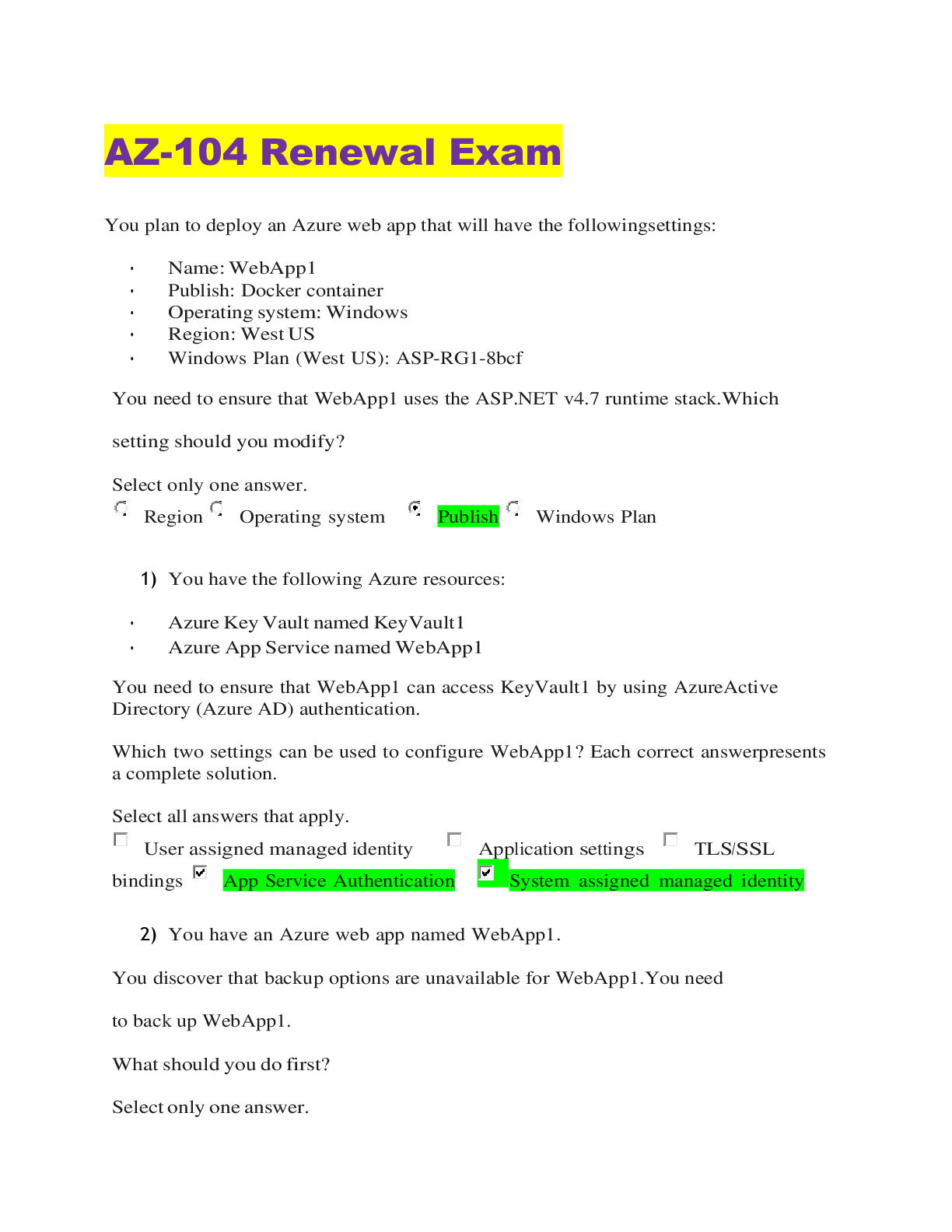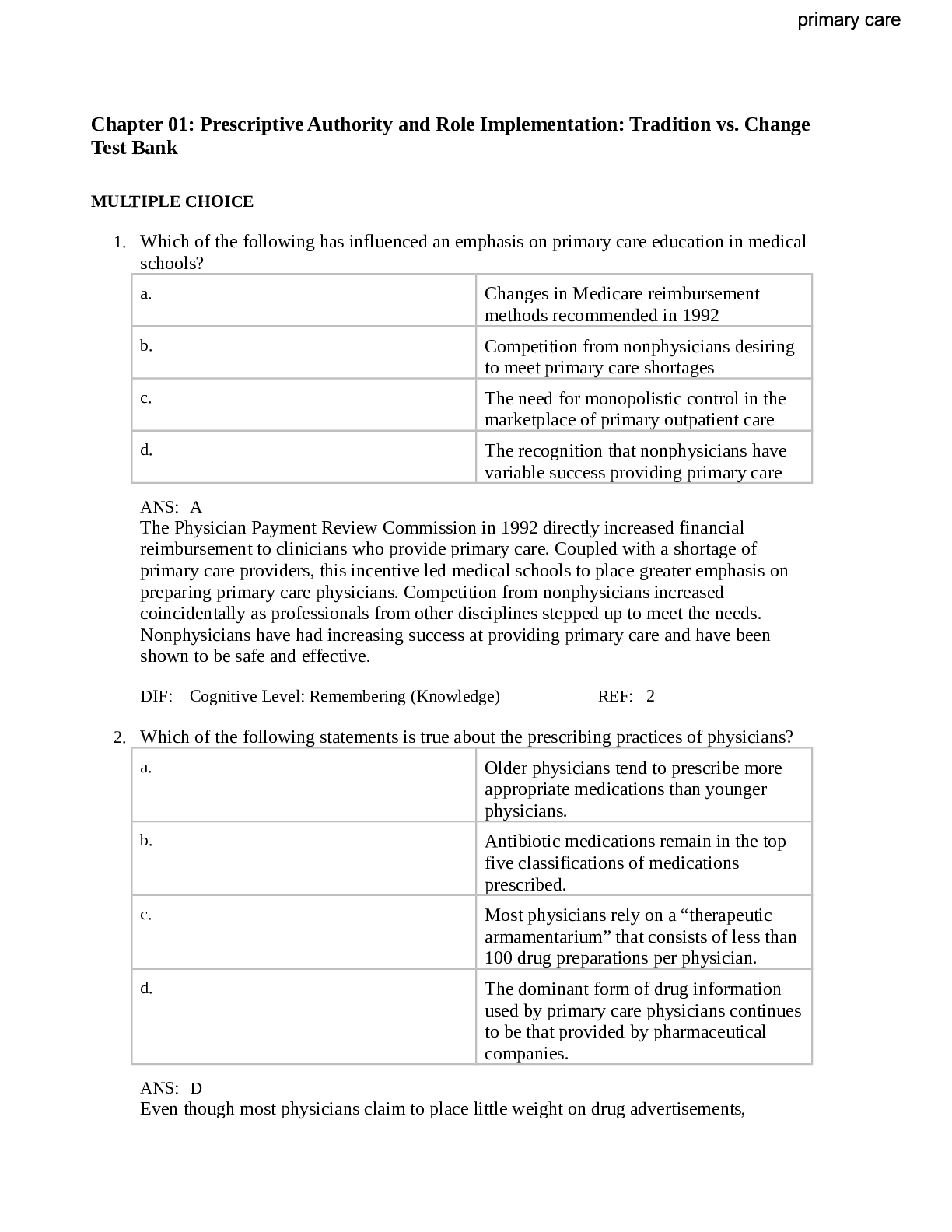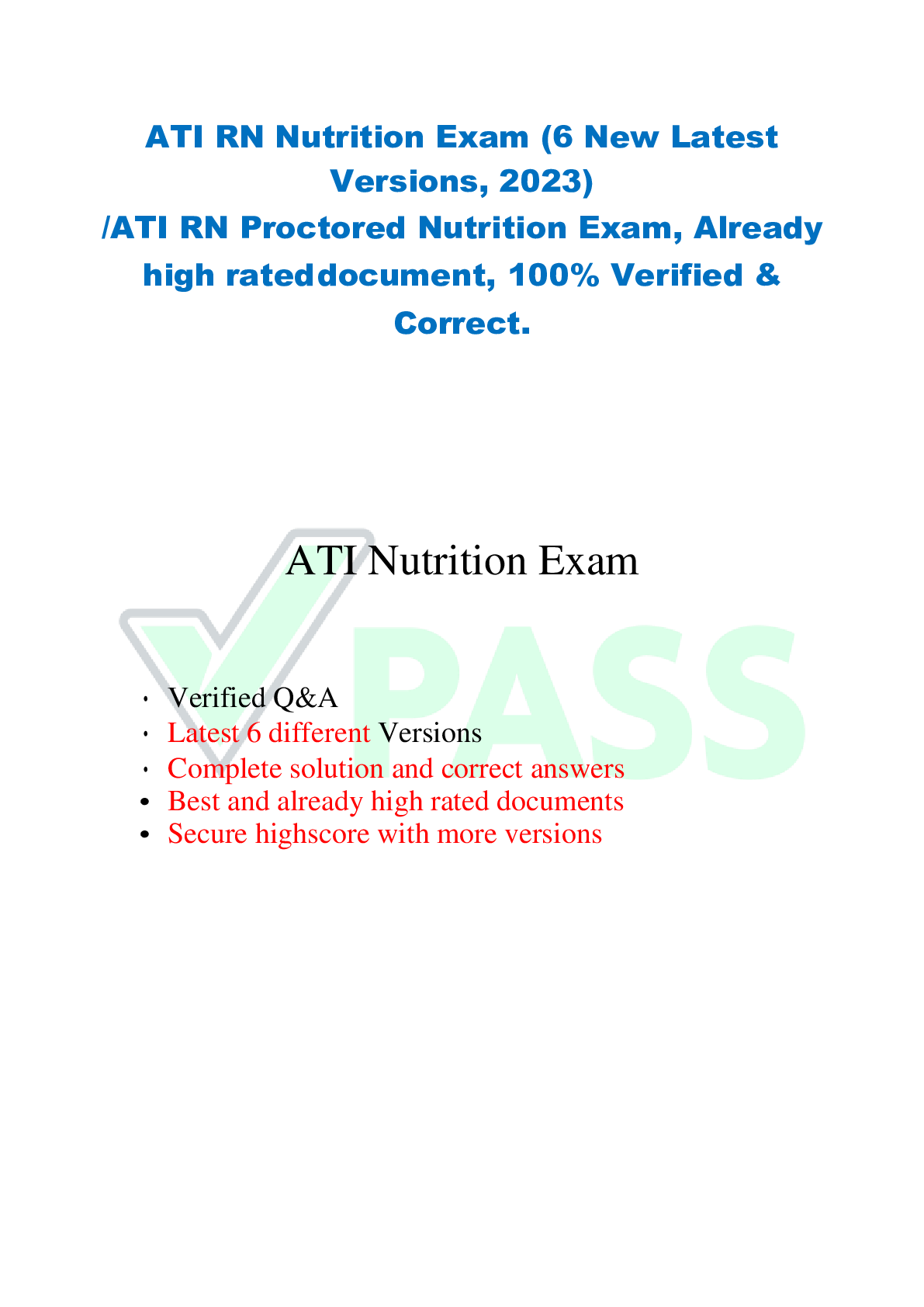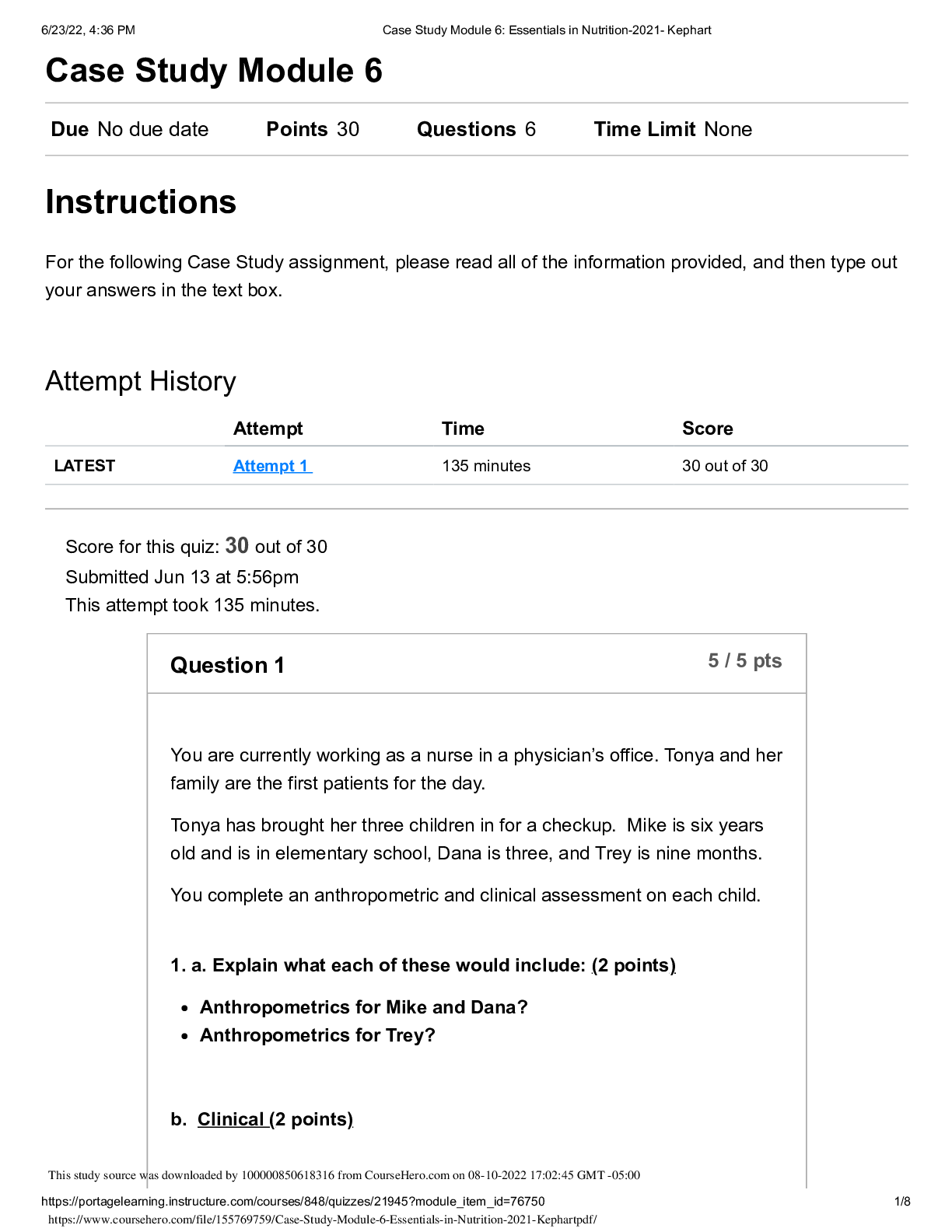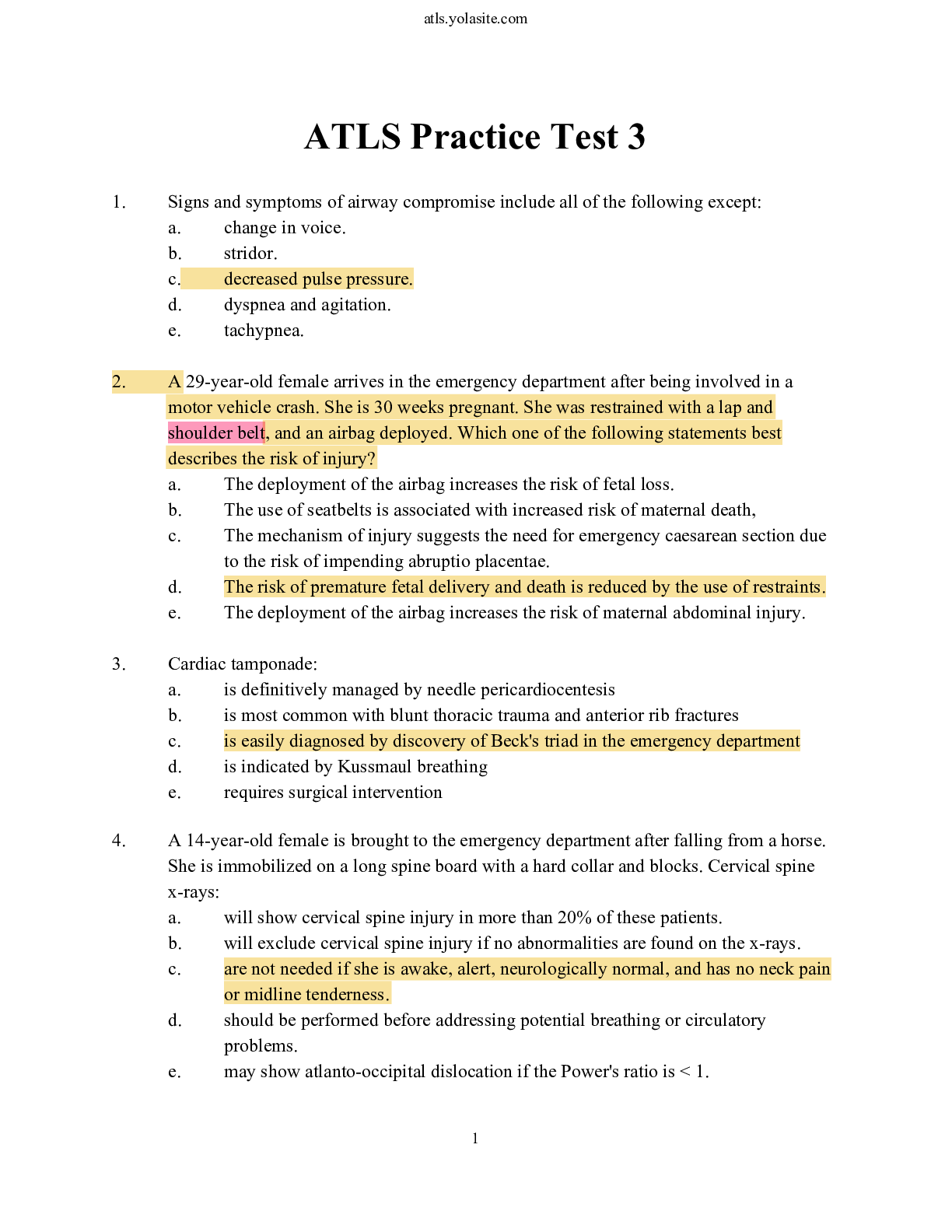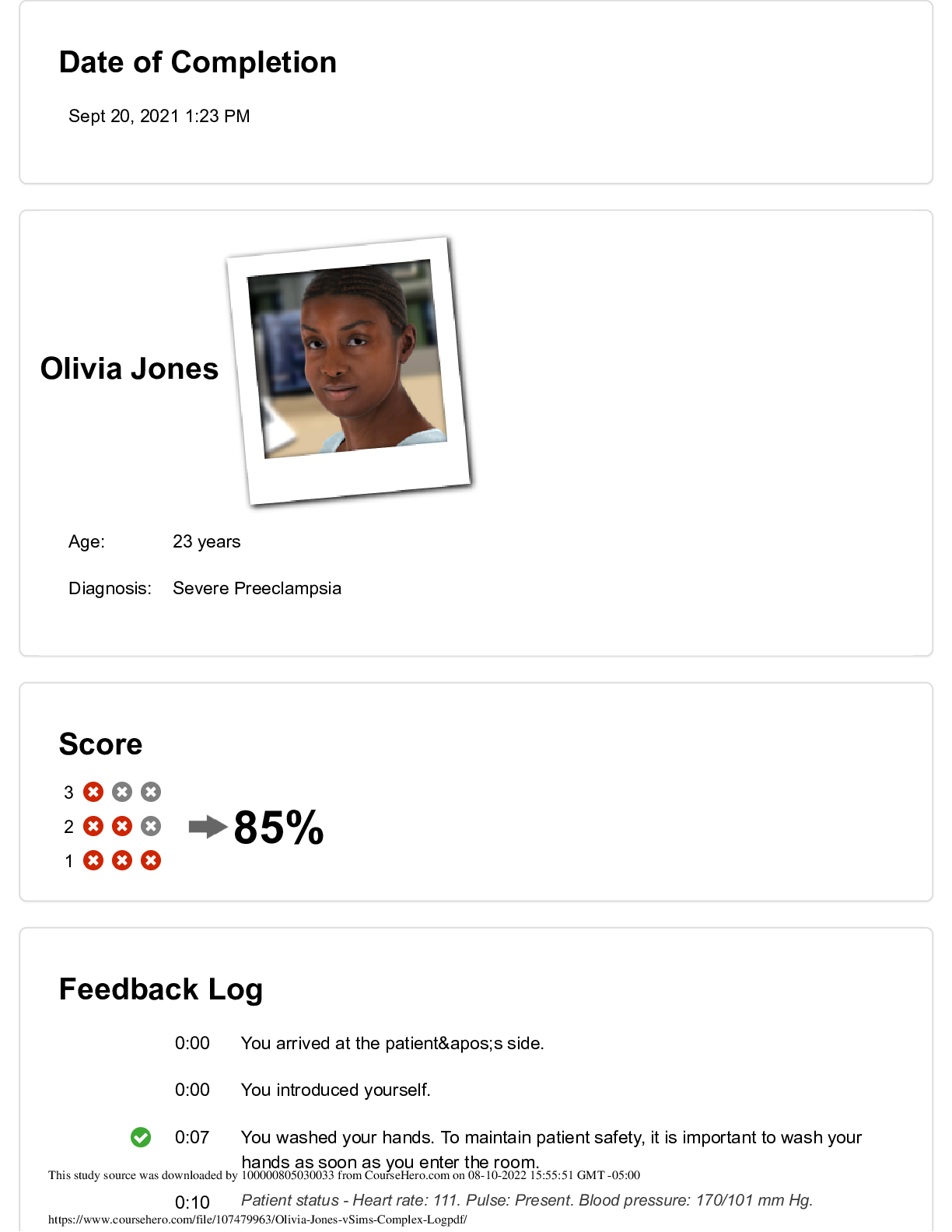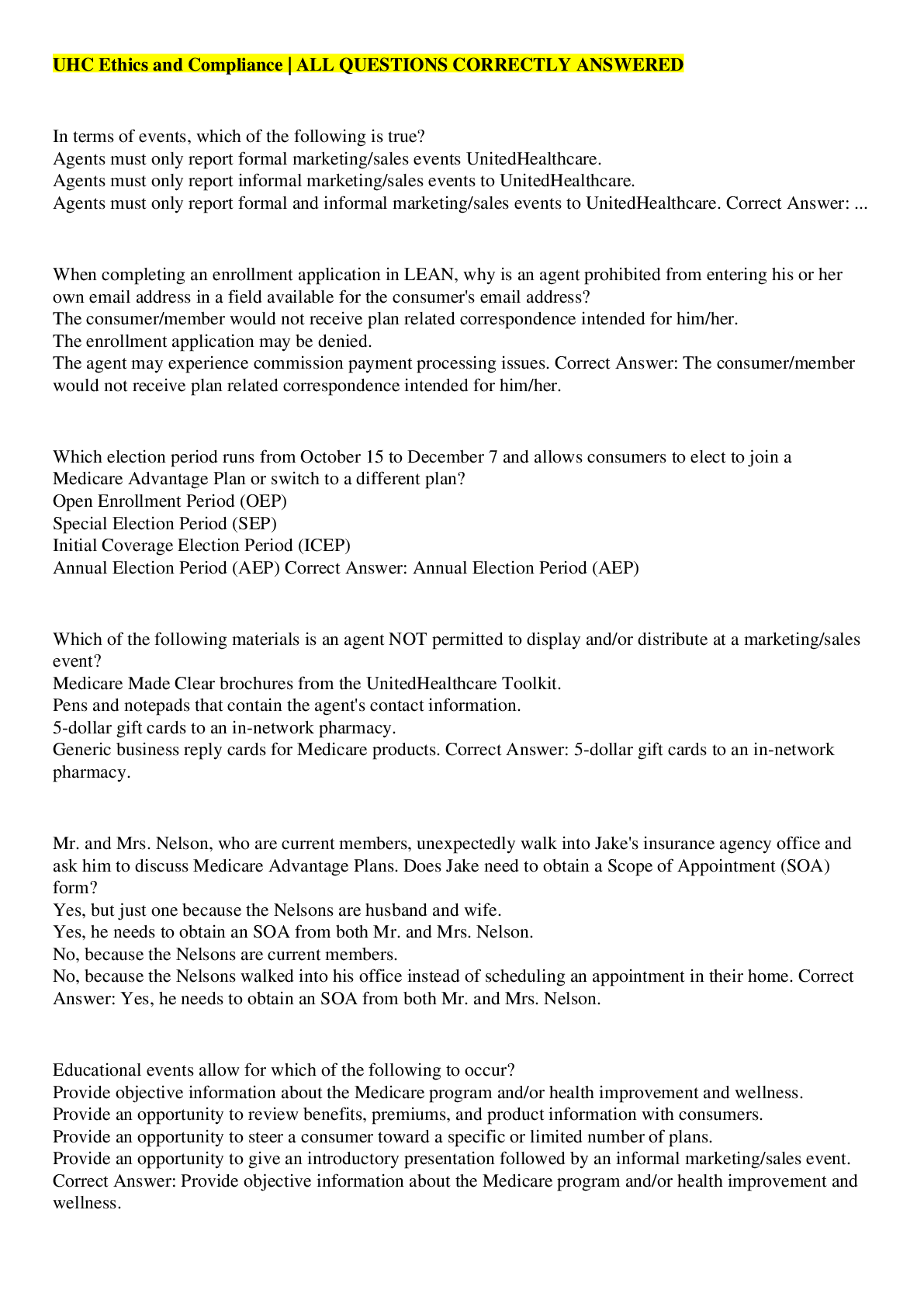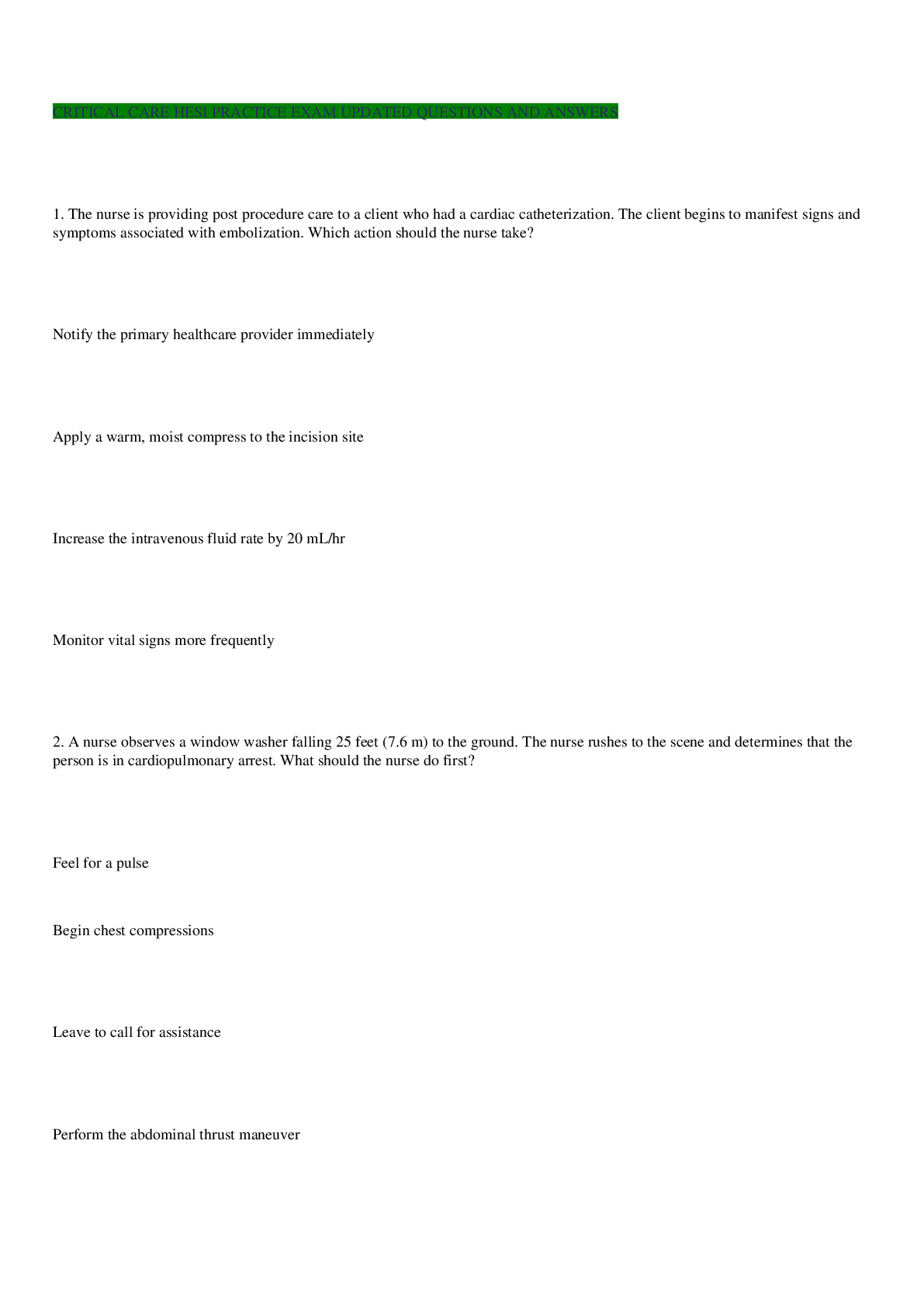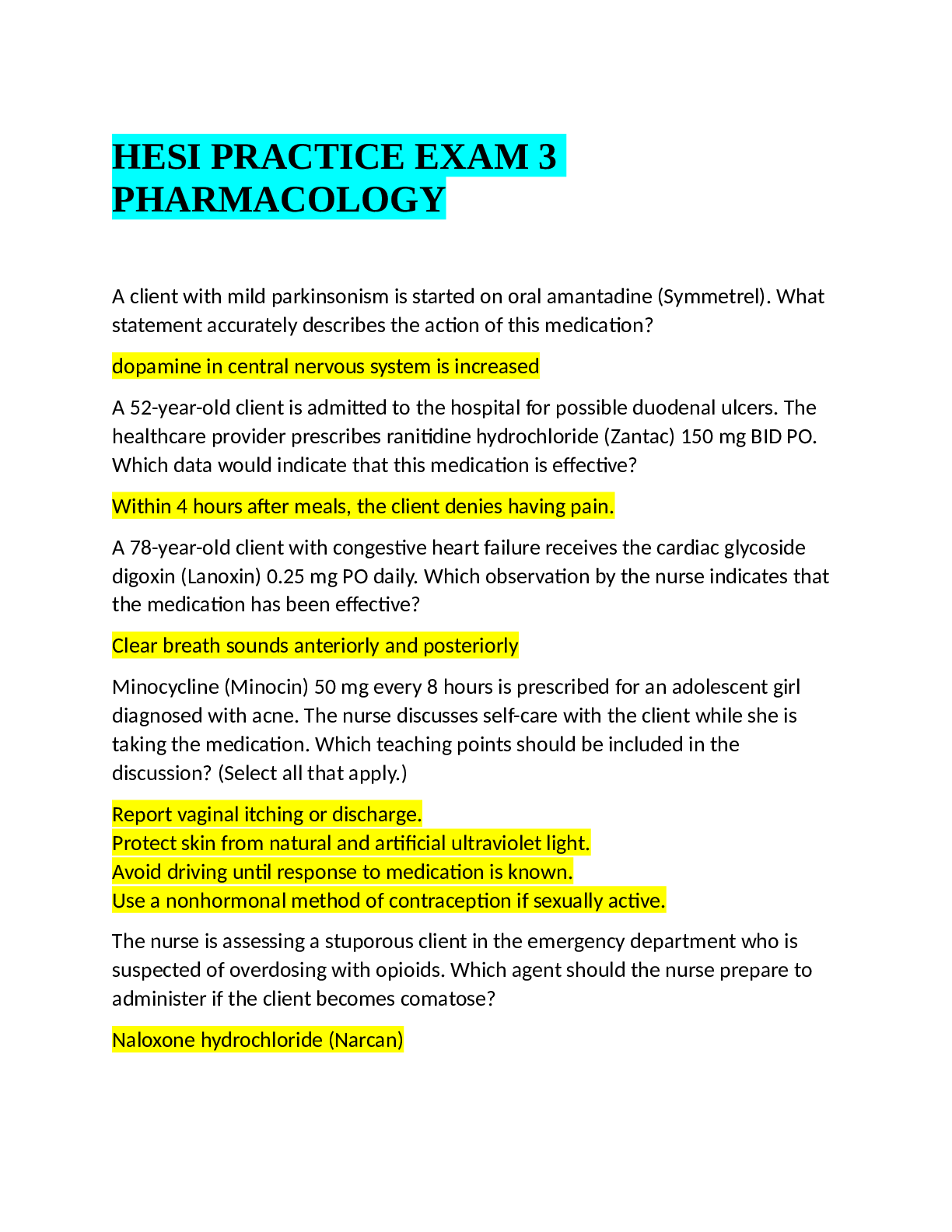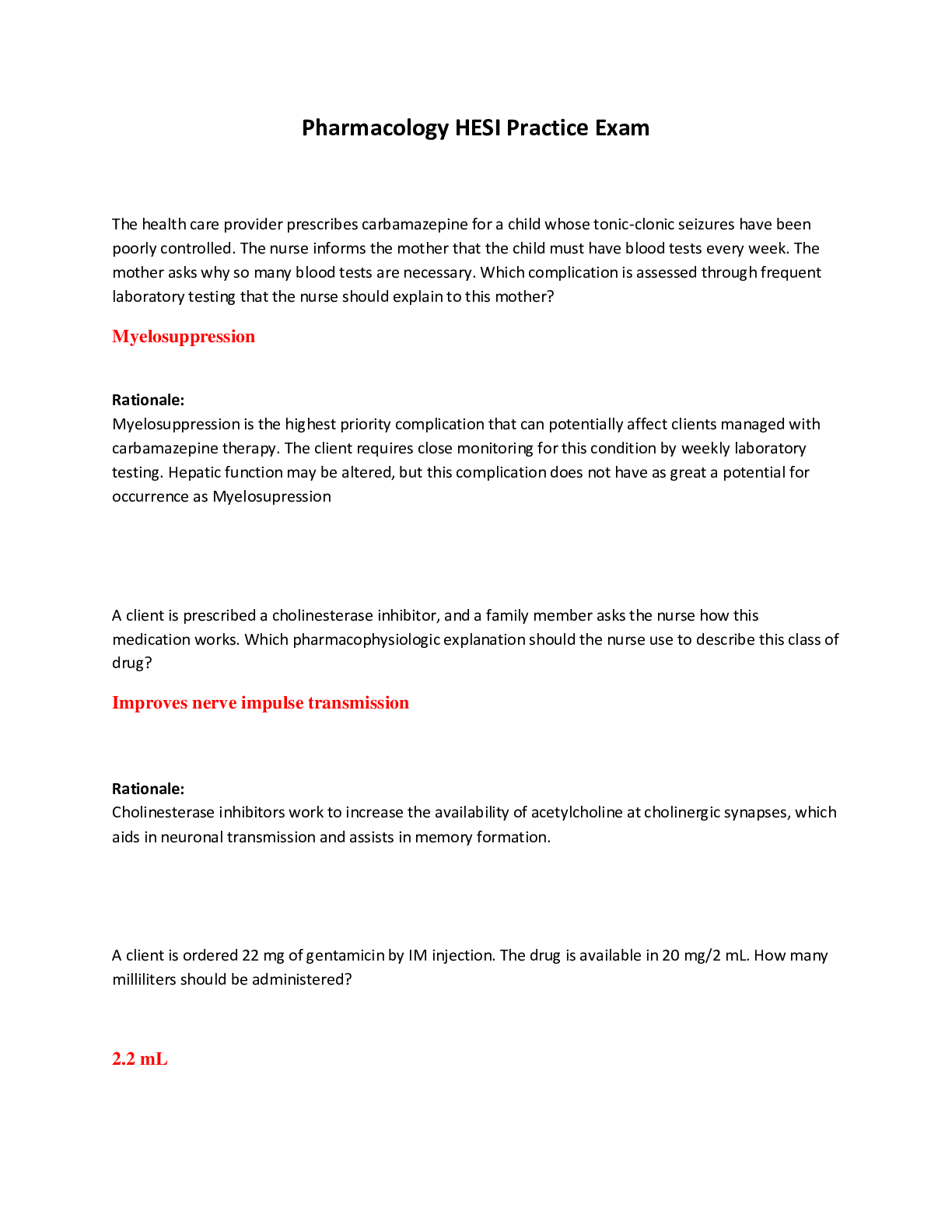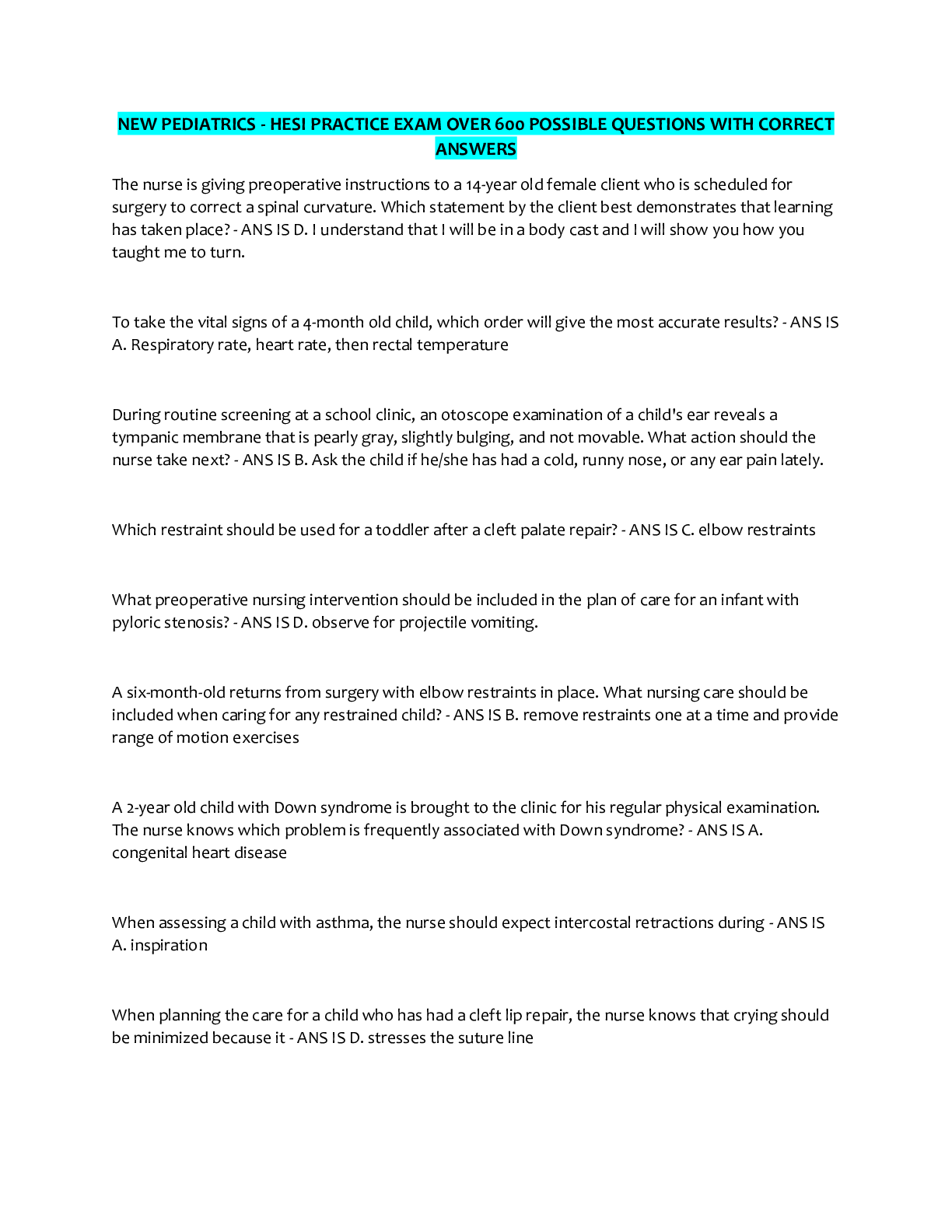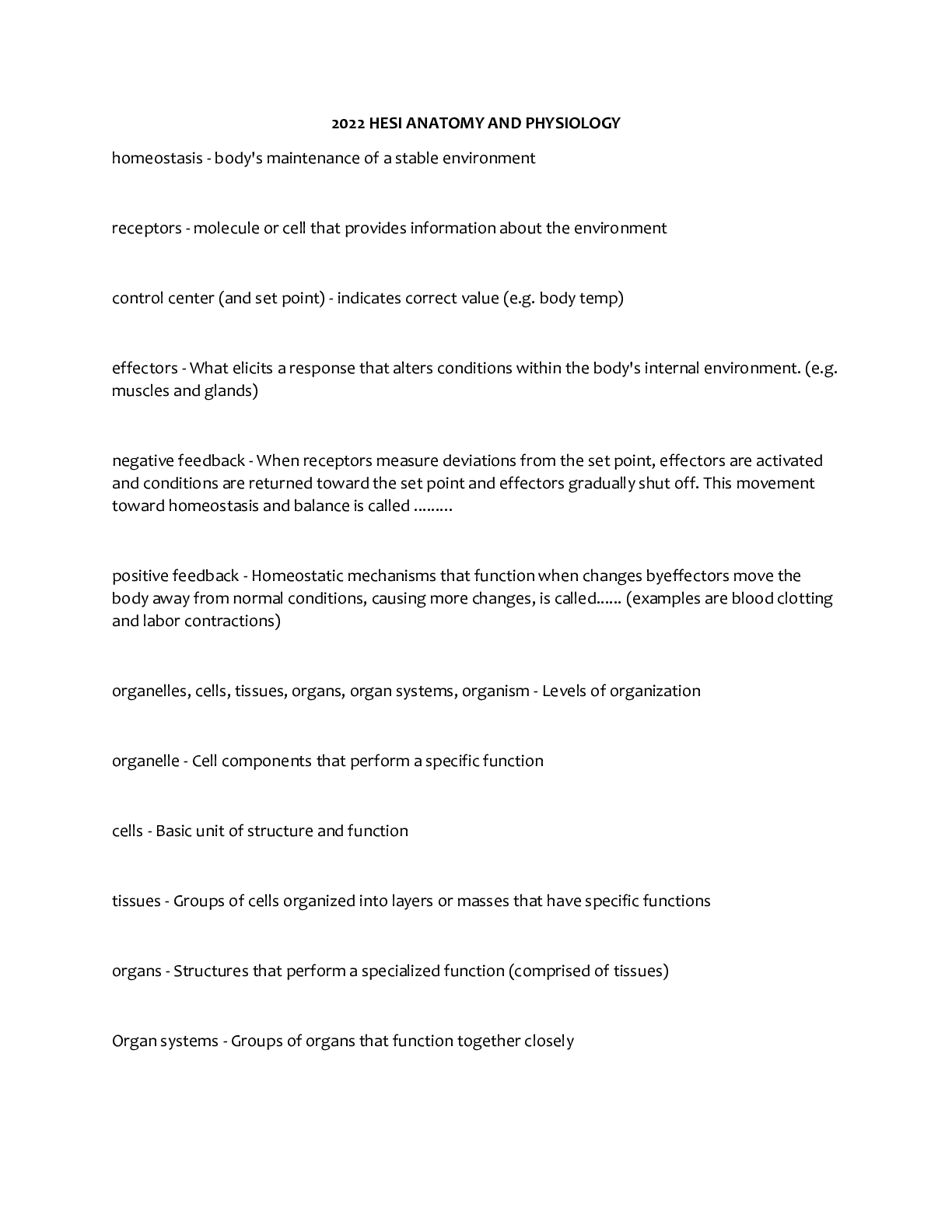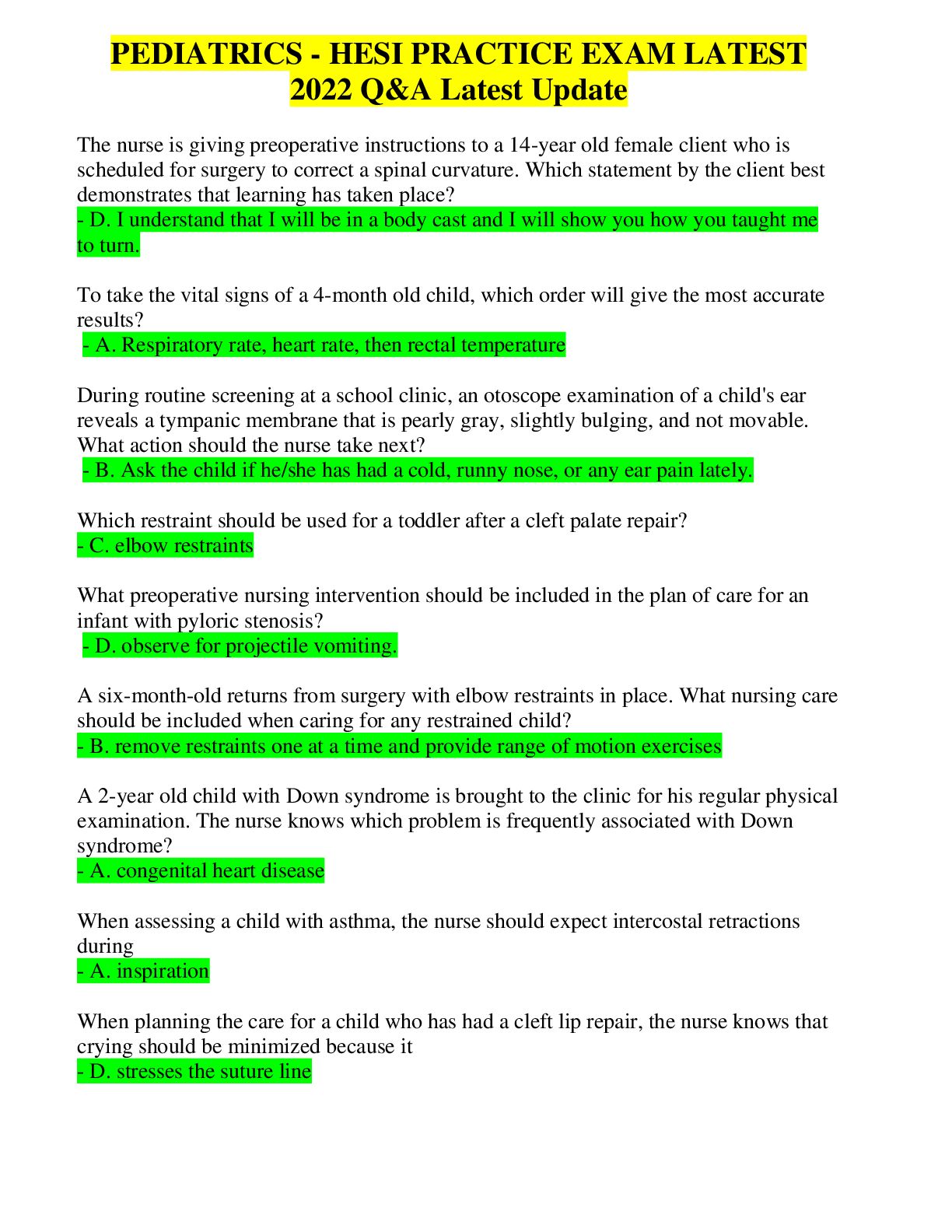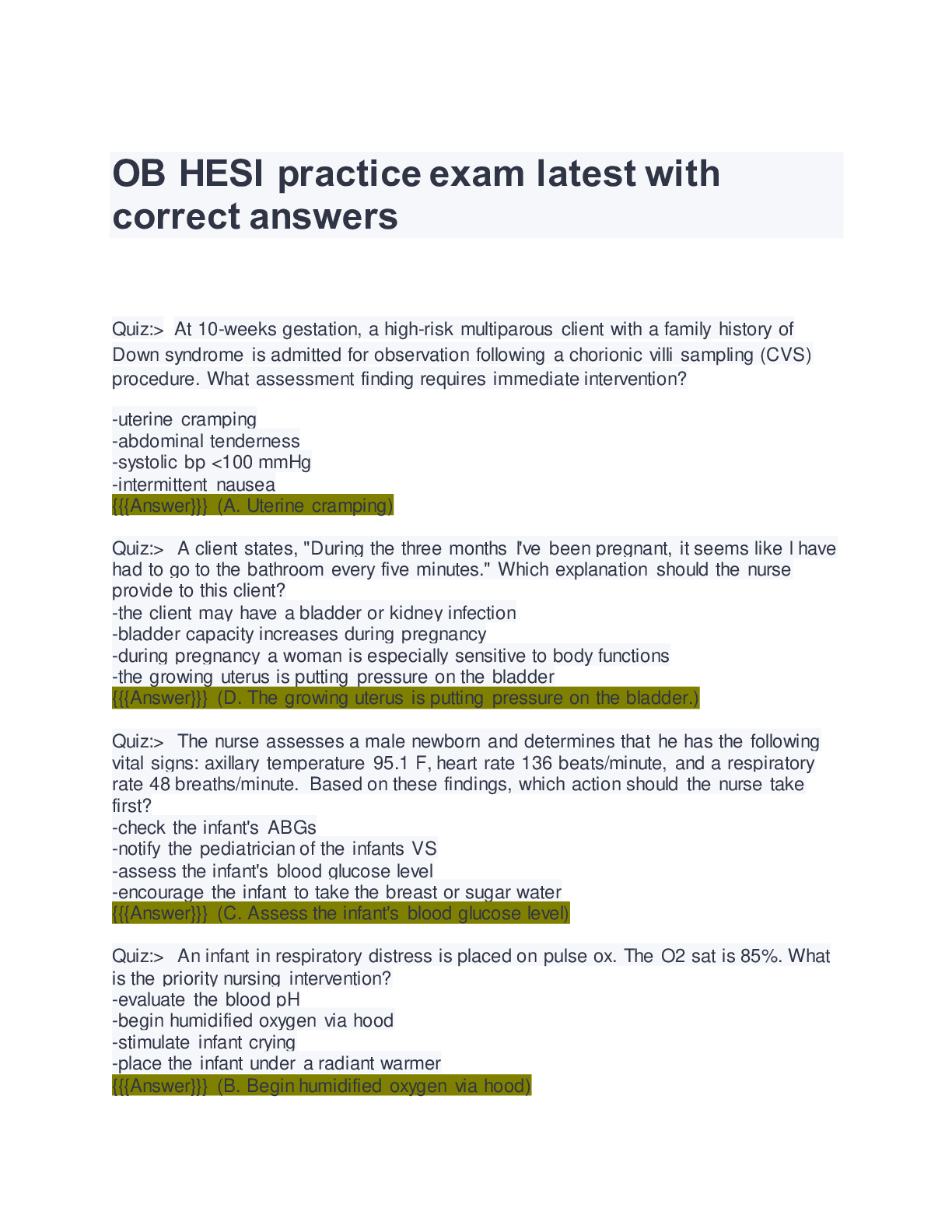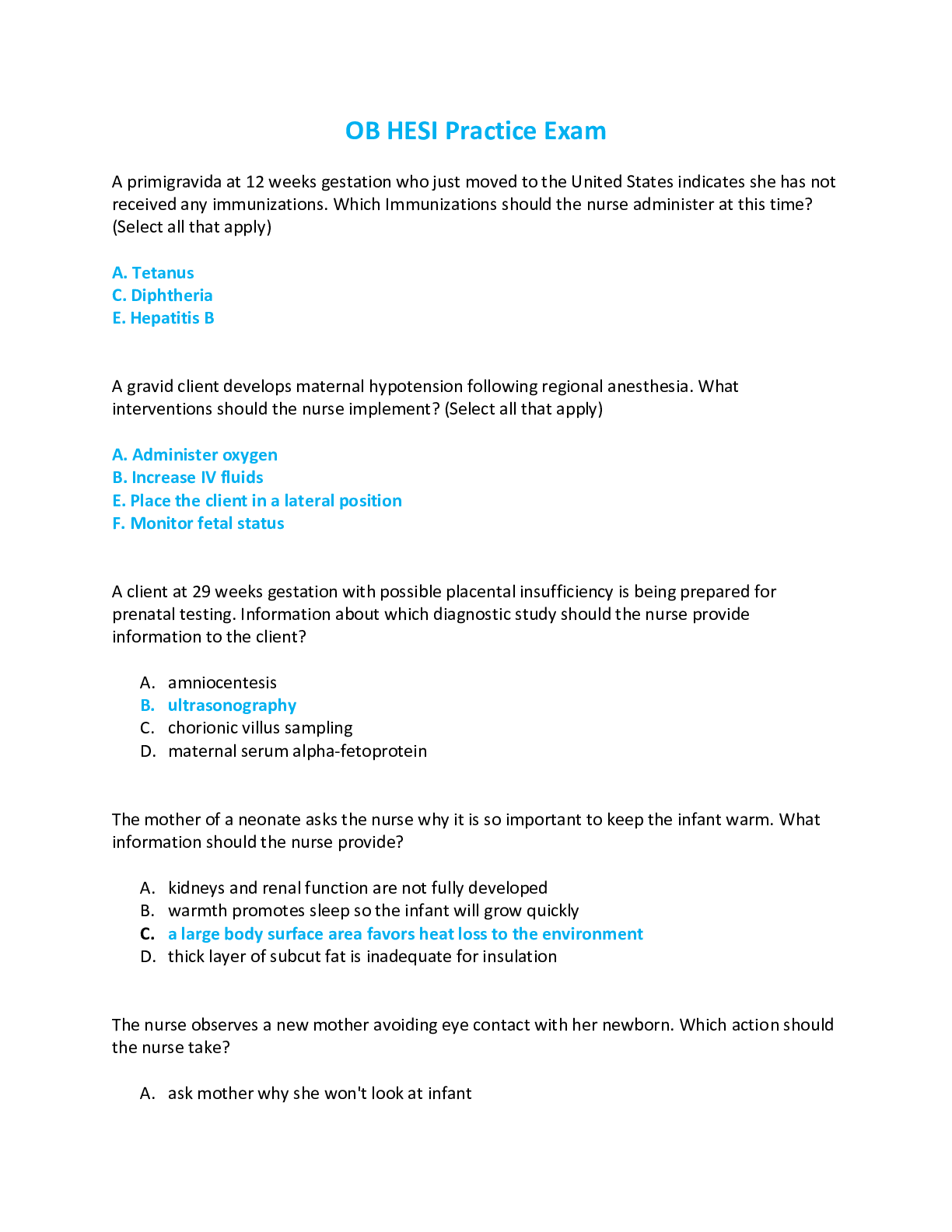2022PEDIATRICS - HESI PRACTICE EXAM
Document Content and Description Below
2022PEDIATRICS - HESI PRACTICE EXAM To take the vital signs of a 4-month old child, which order will give the most accurate results? A. Respiratory rate, heart rate, then rectal temperature... B. Heart rate, rectal temperature, then respiratory rate. C. Rectal temperature, heart rate, then respiratory rate D. Rectal temperature, respiratory rate, then heart rate - CORRECT ANSWERA. Respiratory rate, heart rate, then rectal temperature The respiratory rate should be taken first in infants, since touching them or performing unpleasant procedures usually makes them cry, elevating the heart rate and making respirations difficult to count. Rectal temperature is the most invasive procedure, and is mot likely to precipitate crying, so should be done last. When planning the care for a child who has had a cleft lip repair, the nurse knows that crying should be minimized because it A. increases salivation B. increases the respiratory rate C. leads to vomiting D. stresses the suture line - CORRECT ANSWERD. stresses the suture line Prevention of stress on the lip suture line is essential for optimum healing and the cosmetic appearance of a cleft lip repair. Although crying also causes increased salivation, increased respiratory rate and may lead to vomiting, these conditions do not create a problem for the child with a cleft lip repair. A full-term infant is admitted to the newborn nursery. After careful assessment, the nurse suspects that the infant may have an esophageal atresia. Which symptoms is this newborn likely to have exhibited? A. choking, coughing, and cyanosis B. projectile vomiting and cyanosis C. apneic spells and grunting D. scaphoid abdomen and anorexia - CORRECT ANSWERA. choking, coughing, and cyanosis (A) includes the "3 C's" of esophageal atresia caused by the overflow of secretions into the trachea. (B) is characteristic of pyloric stenosis in the infant. (C) could be due to prematurity or sepsis, and grunting is a sign of respiratory distress. (D) is characteristic of a diaphragmatic hernia. Which behavior would the nurse expect a two-year-old child to exhibit? A. build a house with blocks B. ride a tricycle C. display possessiveness of toys D. look at a picture book for 15 minutes - CORRECT ANSWERC. display possessiveness of toys Two-year old children are egocentric and unable to share with other children. (A, B, and D) are behaviors of a preschooler. A 5-month-old is admitted to the hospital with vomiting and diarrhea. The pediatrician prescribed dextrose 5% and 0.25% normal saline with 2 mEq KCI/100 mL to be infused at 25mL/hr. Prior to initiating the infusion, the nurse should obtain which assessment finding? A. frequency of emesis is the last 8 hours B. serum BUN and creatinine levels C. current blood sugar level D. appearance of the stool - CORRECT ANSWERB. serum BUN and creatinine levels Regardless of a client's age, adequate renal function must be present before adding potassium to IV fluids. (A) is important in determining the need for fluid replacement. (C) is not indicated. (D) is useful information, but will not impact administration of the prescribed IV solution. A preschool-age child who is hospitalized for hypospadias repair is most strongly influenced by which behavior? A. ability to communicate verbally B. response to separation from family C. concern for body integrity D. socialization with other children - CORRECT ANSWERC. concern for body integrity The preschooler's major stressor is concern for his body integrity. He fears that his "insides will leak out". A child undergoing surgery to his genitalia is even more concerned about body integrity. the preschooler is quite verbal so comprehension of the words he uses or hears may be inaccurate, while his imagination and fears may fantasize the reality. (B) is a concern for all children, but of most concern to the toddler. (D) is not a prime concern in this situation. The nurse is teaching a 12-year old male adolescent and his family about taking injections of growth hormone for idiopathic hypopituitarism. Which adverse symptoms, commonly associated with growth hormone therapy should the nurse plan to describe to the child and his family? A. polyuria and polydipsia B. lethargy and fatigue C. increased facial hair D. facial bone structure changes - CORRECT ANSWERA. polyuria and polydipsia Signs and symptoms of diabetes or hyperglycemia need to be reported. those receiving growth hormone should be monitored to detect elevated blood sugars and glucose intolerance. Lethargy and fatigue are associated with any number of health alterations, but is not associated with the growth hormone therapy. Increased facial hair and facial bone structure changes are normal changes that occur with 12-year old males. The nurse is caring for a 12-year old with Syndrome of Inappropriate Antidiuretic Hormone (SIADH). This child should be carefully assessed for which complication? A. poor skin turgor resulting from dehydration B. changes in LOC C. premature aging as the disease progresses D. severe edema from an excess of water and sodium - CORRECT ANSWERB. changes in LOC The child must be monitored for signs and symptoms of hyponatremia, which creates secondary CNS alterations, such as changes in LOC, seizure and coma. Fluid overload occurs with SIADH not dehydration (which occurs with diabetes insipidus). Premature aging is caused by hypersecretion of growth hormone, not SIADH. Severe edema is not found in children with SIADH because edema is caused by an excess of both water and sodium. The mother of a 2-year old boy consults the nurse about her son's increased tempter tantrums. The mother states, "Yesterday he threw a fit in the grocery store, and I did not know what to do. I was embarrassed. What can I do if this occurs again?" Which recommendation is best for the nurse to provide this mother? A. paddle him gently as soon as the behavior is initiated B. immediately put him in "time-out" C. quietly remind him that others are watching him D. walk away from him and ignore the behavior - CORRECT ANSWERD. walk away from him and ignore the behavior The best approach for a toddler is to ignore the attention-seeking behavior. The parent should be somewhat nearby within view of the child but should avoid reinforcing the behavior in any way. Tantrums can sometimes be avoided by talking to the child before the situation occurs. (A, B, and C) would all provide attention for the inappropriate behavior. A hospitalized 16-year old male refuses all visits from his classmates because he is concerned about his distorted appearance. To increase the client's social interaction, what intervention is best for the nurse to initiate? A. encourage the client to use a hand-held video game that is popular with all his friends B. assign a 25 year old female nursing student to offer support to the client C. arrange for an internet connection in the client's room for email communication D. encourage the client's mother to arrange a surprise get together in the cafeteria. - CORRECT ANSWERC. arrange for an internet connection in the client's room for email communication Body image and peer acceptance are key concerns for the adolescent. (C) allows for social interaction without face to face contact, thus protecting his self-image while also promoting social interaction. (A) does not promote social interaction. (B) does not encourage interaction with his own peer group, which is of greater import1ance. (D) does not respect the client's concern about his body image. The parents of a 3-week old infant report that the child eats well but vomits after each feeding. what information is most important for the nurse to obtain? A. description of vomiting episodes in the past 24 hours B. number of wet diapers in last 24 hours C. feeding and sleep schedule D. amount of formula consumed during the past 24 hours - CORRECT ANSWERA. description of vomiting episodes in the past 24 hours A description of the vomiting episodes will assist the nurse in determining the reason for the symptoms, which may be helpful in developing a plan of care for this infant. (B and C) provide related information but are not as helpful as (A). (D) may be related to vomiting but the nurse should first obtain a better description of the vomiting episodes. A female teenager is taking oral tetracycline HCL (Achromycin V) for acne vulgaris. What is the most important instruction for the nurse to include in this client's teaching plan? A. Use sunscreen when lying by the pool. B. cleanse the skin at least 4 times a day. C. take the medication with a glass of milk D. menstrual periods may become irregular - CORRECT ANSWERA. Use sunscreen when lying by the pool. Photosensitivity is a common side effect of tetracycline HCL (Achromycin V) therapy. Severe sunburn can occur with minimal sun exposure and clients should be instructed to avoid sunlight and to use sunscreen. (B and D) are not related to tetracyline HCL (Achromycin V) therapy. (C) should be avoided because dairy products interfere with the absorption of tetracyclines. A [Show More]
Last updated: 1 year ago
Preview 1 out of 8 pages
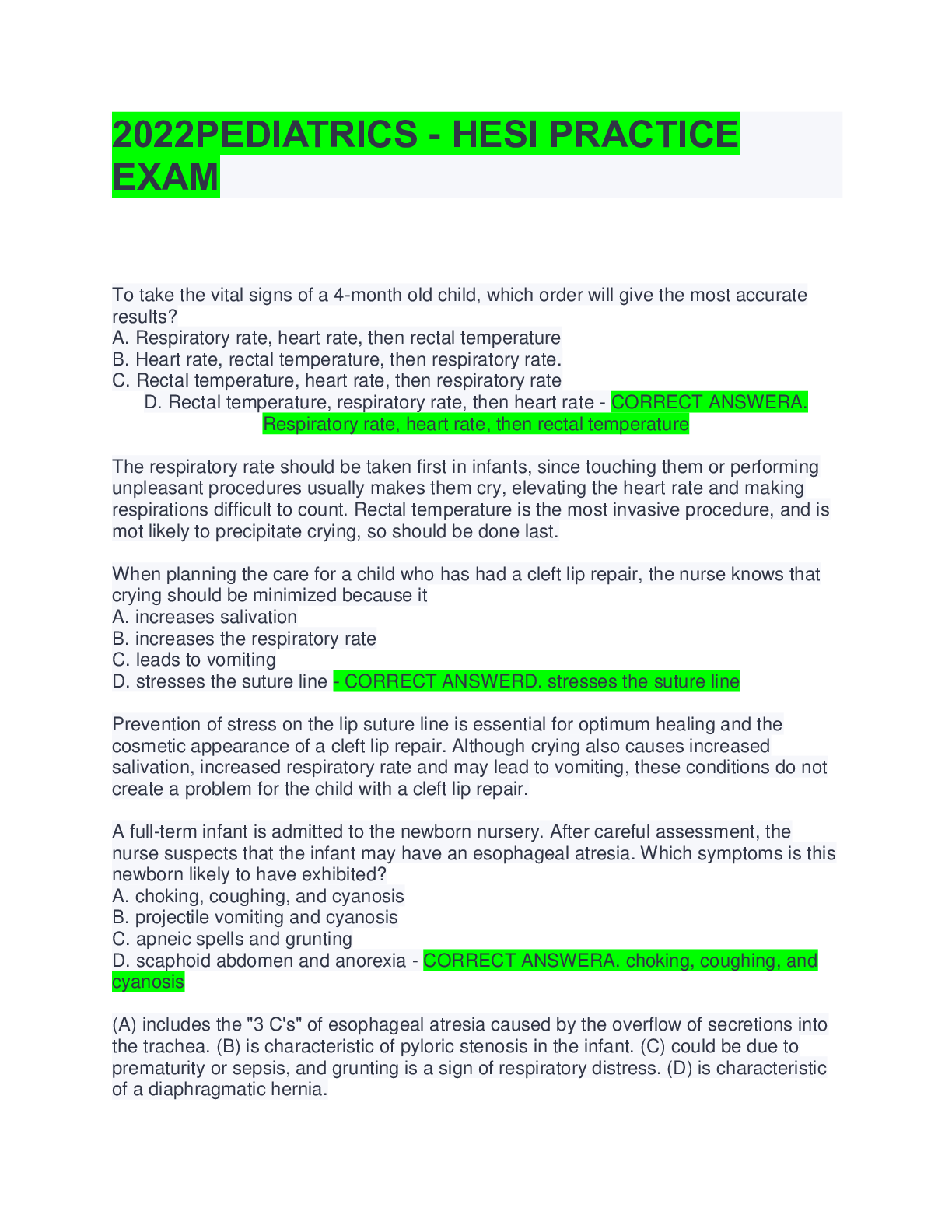
Reviews( 0 )
Document information
Connected school, study & course
About the document
Uploaded On
Aug 08, 2022
Number of pages
8
Written in
Additional information
This document has been written for:
Uploaded
Aug 08, 2022
Downloads
0
Views
48

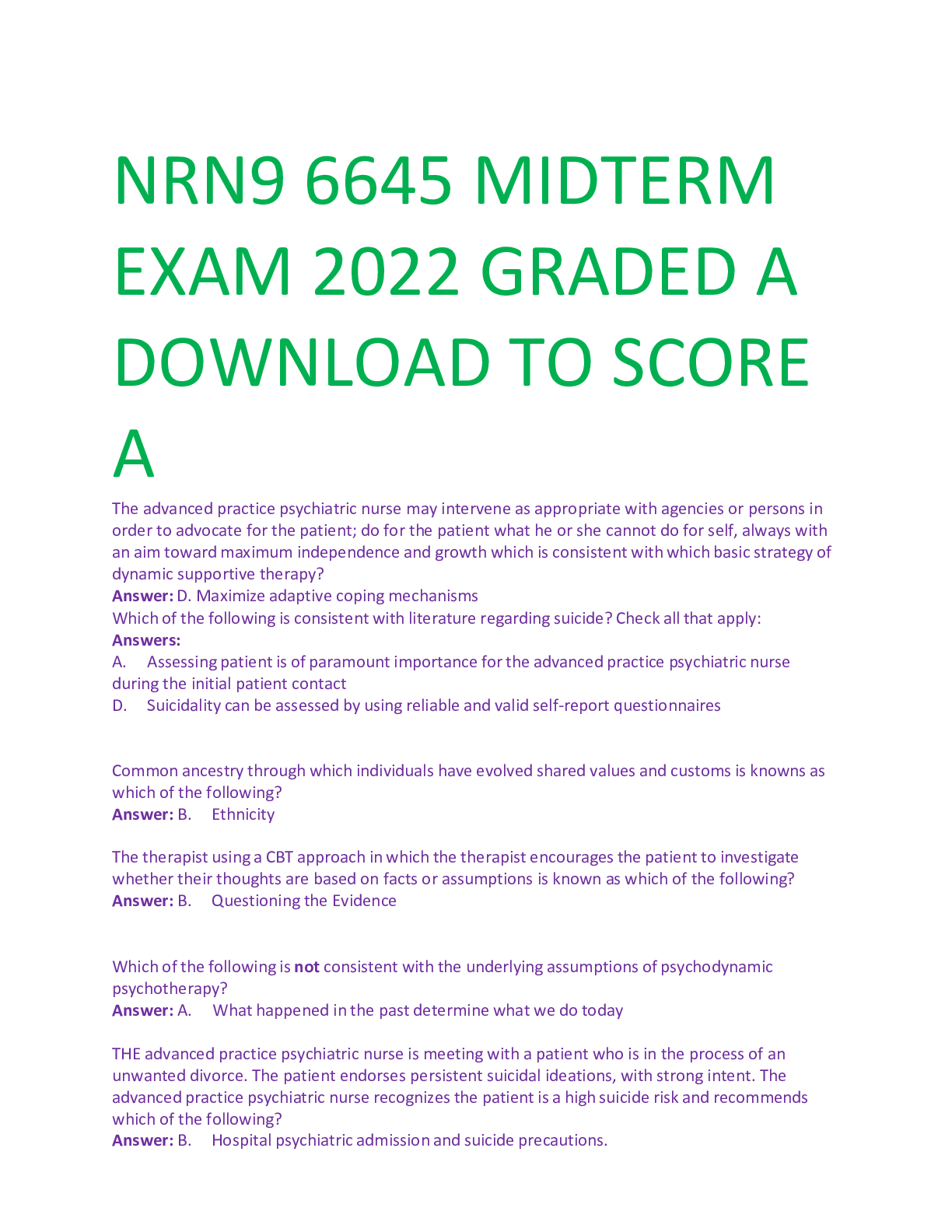
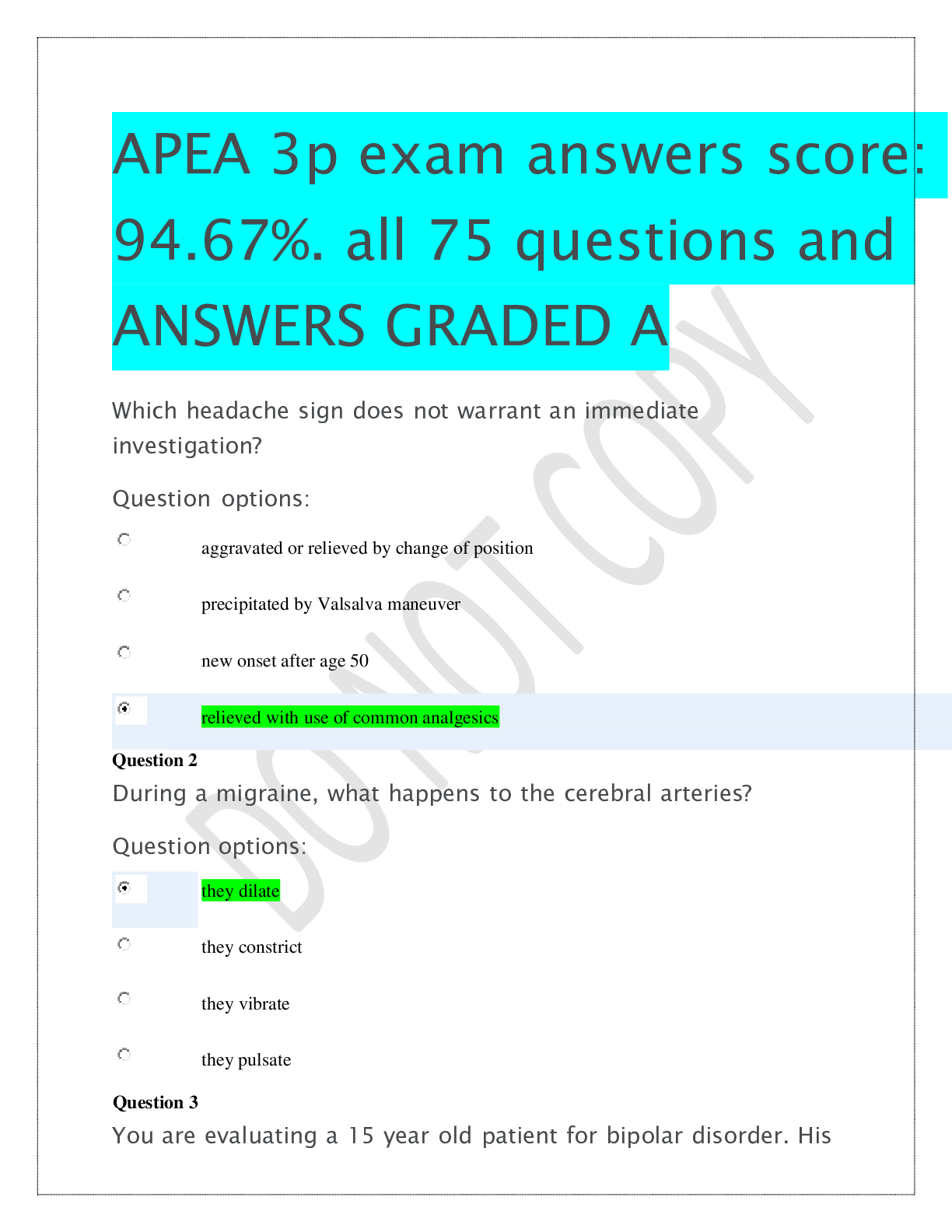

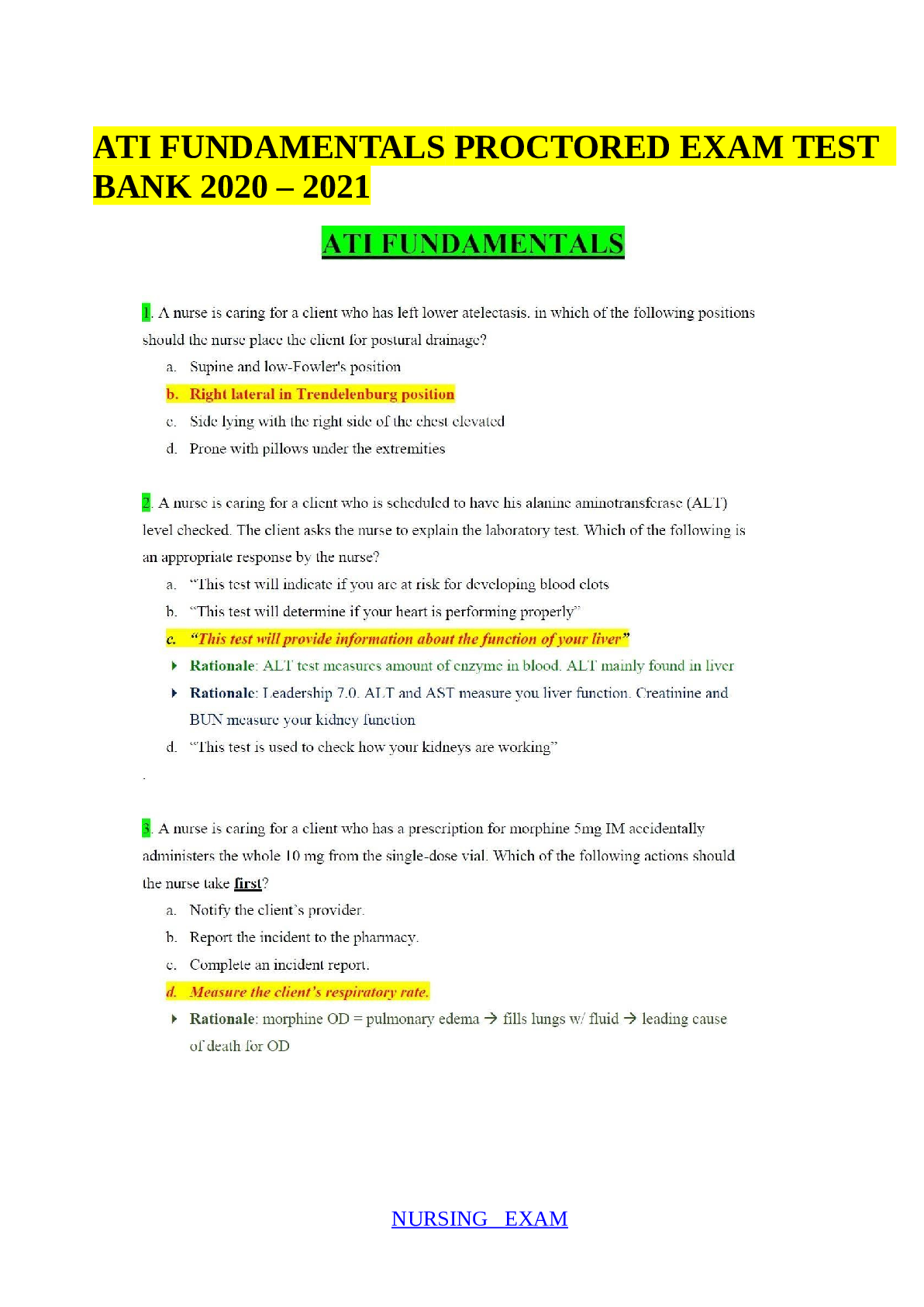
.png)
.png)

